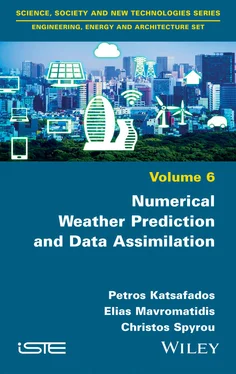29 22
30 23
31 24
32 25
33 26
34 27
35 28
36 29
37 30
38 31
39 32
40 33
41 34
42 35
43 36
44 37
45 38
46 39
47 40
48 41
49 42
50 43
51 44
52 45
53 46
54 47
55 48
56 49
57 50
58 51
59 52
60 53
61 54
62 55
63 56
64 57
65 58
66 59
67 60
68 61
69 62
70 63
71 64
72 65
73 66
74 67
75 68
76 69
77 70
78 71
79 72
80 73
81 74
82 75
83 76
84 77
85 78
86 79
87 80
88 81
89 82
90 83
91 84
92 85
93 86
94 87
95 88
96 89
97 90
98 91
99 92
100 93
101 94
102 95
103 96
104 97
105 98
106 99
107 100
108 101
109 102
110 103
111 104
112 105
113 106
114 107
115 108
116 109
117 110
118 111
119 112
120 113
121 114
122 115
123 116
124 117
125 118
126 119
127 120
128 121
129 122
130 123
131 124
132 125
133 126
134 127
135 128
136 129
137 130
138 131
139 132
140 133
141 134
142 135
143 136
144 137
145 138
146 139
147 140
148 141
149 142
150 143
151 144
152 145
153 146
154 147
155 148
156 149
157 150
158 151
159 152
160 153
161 154
162 155
163 156
164 157
165 158
166 159
167 160
168 161
169 162
170 163
171 164
172 165
173 166
174 167
175 168
176 169
177 170
178 171
179 172
180 173
181 174
182 175
183 176
184 177
185 178
186 179
187 180
188 181
189 182
190 183
191 184
192 185
193 186
194 187
195 188
196 189
197 190
198 191
199 192
200 193
201 194
202 195
203 196
204 197
205 198
206 199
207 200
208 201
209 202
210 203
211 204
212 205
213 206
214 207
215 208
216 209
217 210
218 211
219 212
220 213
221 214
222 215
Engineering, Energy and Architecture Set
coordinated by
Lazaros E. Mavromatidis
Volume 6
Numerical Weather Prediction and Data Assimilation
Petros Katsafados
Elias Mavromatidis
Christos Spyrou

First published 2020 in Great Britain and the United States by ISTE Ltd and John Wiley & Sons, Inc.
Apart from any fair dealing for the purposes of research or private study, or criticism or review, as permitted under the Copyright, Designs and Patents Act 1988, this publication may only be reproduced, stored or transmitted, in any form or by any means, with the prior permission in writing of the publishers, or in the case of reprographic reproduction in accordance with the terms and licenses issued by the CLA. Enquiries concerning reproduction outside these terms should be sent to the publishers at the undermentioned address:
ISTE Ltd
27-37 St George’s Road
London SW19 4EU
UK
www.iste.co.uk
John Wiley & Sons, Inc.
111 River Street
Hoboken, NJ 07030
USA
www.wiley.com
© ISTE Ltd 2020
The rights of Petros Katsafados, Elias Mavromatidis and Christos Spyrou to be identified as the authors of this work have been asserted by them in accordance with the Copyright, Designs and Patents Act 1988.
Library of Congress Control Number: 2020931739
British Library Cataloguing-in-Publication Data
A CIP record for this book is available from the British Library
ISBN 978-1-78630-141-3
This book reflects the need to provide fundamental knowledge about theoretical and applied numerical weather prediction (NWP) and data assimilation (DA). It has been written to support undergraduates and graduates in atmospheric or Earth sciences and introduce students to elementary atmospheric dynamics and modeling, finite difference methods, numerical parameterizations, and optimization methods. This book has a more introductory and applied approach to the methods and techniques for NWP. It also includes essential materials for meteorological DA and modeling of the desert dust cycle in the atmospheric environment. Emission patterns, advection methods and deposition processes are all deployed in the chapter describing the desert dust cycle. The final chapter consists of real case studies simulating extreme weather events and a dust outbreak in hindcasting, nowcasting and forecasting modes.
This book is divided into six main chapters and two appendices. Apart from a brief introduction to NWP and DA in the Introduction, the theoretical material is covered in Chapters 1– 4. The primitive equations governing the main atmospheric motions are analytically presented in Chapter 1, and the methods of solutions and finite difference schemes are included in Chapter 2. The implementation of the primitive equations on grid structures with boundary condition treatment is presented in Chapter 3. DA including successive correction methods and the variational approach with simple examples are introduced in Chapter 4. Chapter 5is devoted to the analysis and modeling of desert dust processes, as well as a review of the parameterizations of dust feedbacks on climate. Finally, the simulations of three extreme weather events and a desert dust outbreak are presented in Chapter 6. The cases have been chosen as paradigms of phenomena on different time and spatial scales and to explore how such processes are eventually resolved in an atmospheric simulation. The appendices are presented at the end of this book, which include the basics of vector analysis and transformations into a rotating coordinate system, as well as turbulent diffusion and planetary boundary layer parameterizations.
Acknowledgments : We are indebted to a number of colleagues and PhD candidates for their contributions during the preparation of this book. Dr. George Varlas, Ms. E. Papadopoulou, Ms. V. M. Nomikou and Ms. A. Pappa are all acknowledged for their contributions to performing a part of the embedded simulations and results analysis. The European Centre for Medium Range Weather Forecasts (ECMWF), the National Center for Environmental Predictions (NCEP) and the National Oceanic and Atmospheric Administration (NOAA) are acknowledged for providing gridded analyses and climatologies, as well as surface observational data. The National Center for Atmospheric Research (NCAR) and the University Corporation for Atmospheric Research (UCAR) are also acknowledged for making available to us the Community Atmosphere Model version 3 (CAM3) and the Weather Research and Forecasting (WRF) model. Finally, we are grateful to the Hellenic National Meteorological Service (HNMS) and the National Observatory of Athens (NOA) for providing the precipitation measurements used in the case study of nowcasting in Chapter 6.
Petros KATSAFADOS
Elias MAVROMATIDIS
Christos SPYROU
February 2020
Numerical weather prediction (NWP) is the state-of-the-art method for supporting atmospheric modeling and weather forecasting that combines a set of differential equations, describing grid scale motions, with parameterizations of the non-physically resolved processes usually deployed in the sub-grid scale. All of these are applied to a geographical domain with specific resolution and integrated on the basis of initial and domain boundary conditions. The set of differential equations govern changes in the motion and thermodynamics of the atmosphere, which are derived from conservation laws of mass, momentum, energy and moisture. They are written in the Eulerian framework, in which values and their partial derivatives (changes in the variable over time, for example, ∂T/∂t , or space ∂T/∂x ) are considered at fixed locations on Earth. The atmospheric variables of the equations (e.g. temperature, humidity, wind components, pressure and many others) have independent variables in space, longitude ( x ), latitude ( y ), height ( z ) and time ( t ). The partial derivatives of the atmospheric variables are extremely complex, hence they cannot be solved analytically. Therefore, only approximate solutions are obtained through advanced numerical methods. Since these equations govern how the variables change in space and time, knowledge of the initial condition of the atmosphere is essential to solve the equations and estimate new values of these variables. Thus, NWP is considered as an initial value problem. Various types of weather observations can serve as input to produce initial conditions of the differential equations through a process called data assimilation (DA). It is a method of combining observations with model outputs in order to reduce the errors of the latter. This method is based on the optimal fitting of the model state to the observations for a given time to produce analysis fields which correspond to the best estimation of the atmospheric variables.
Читать дальше













